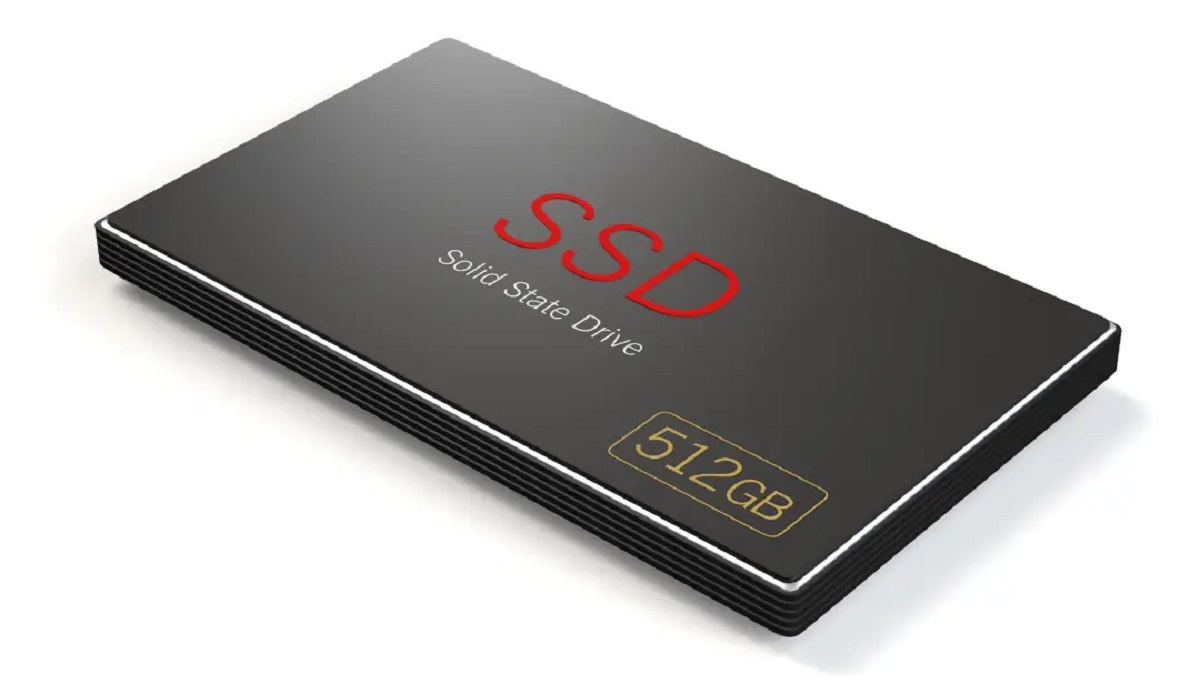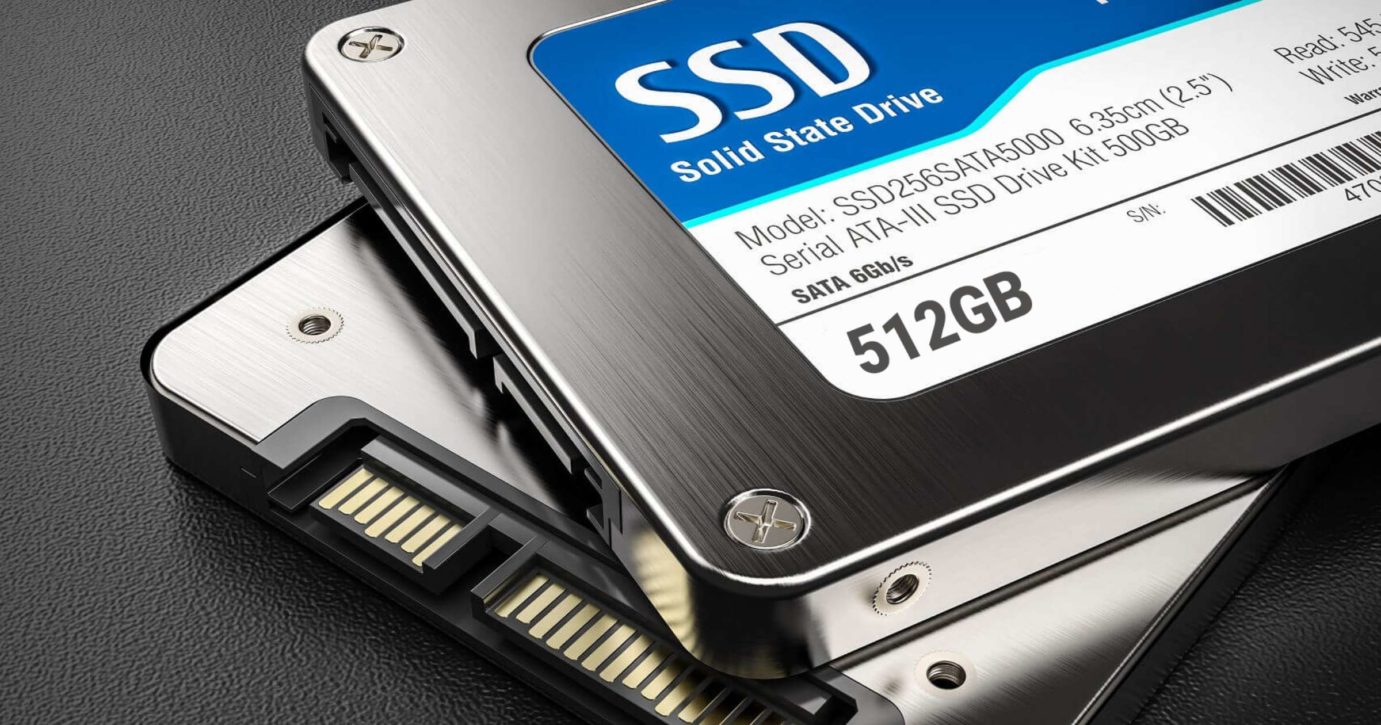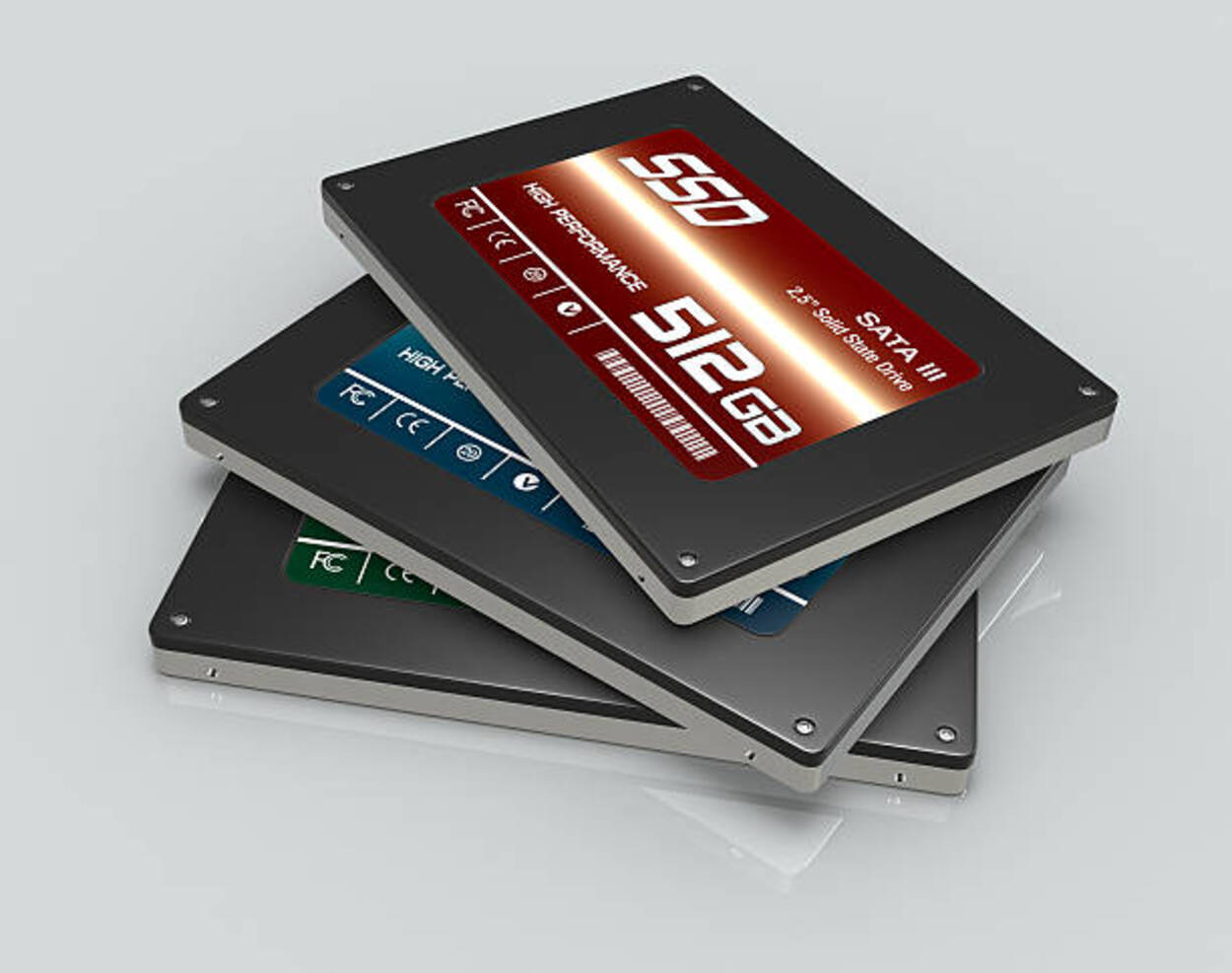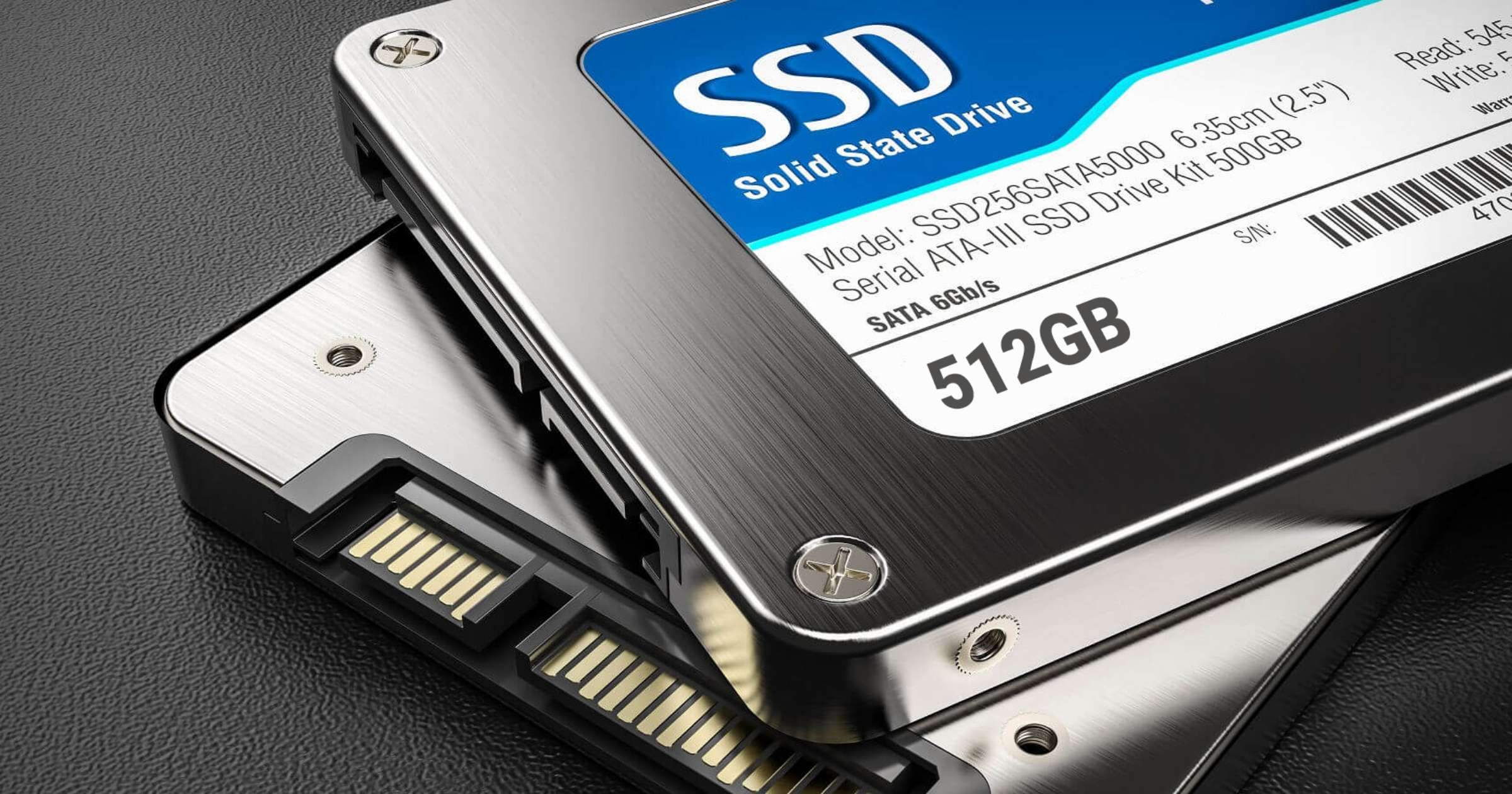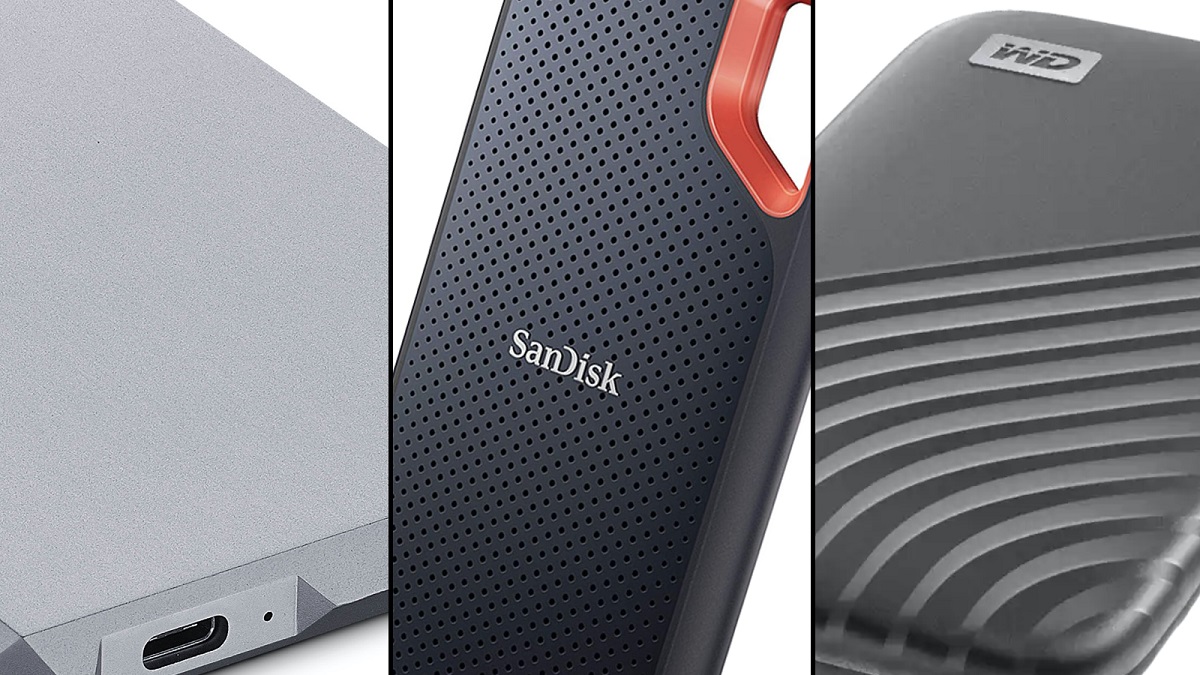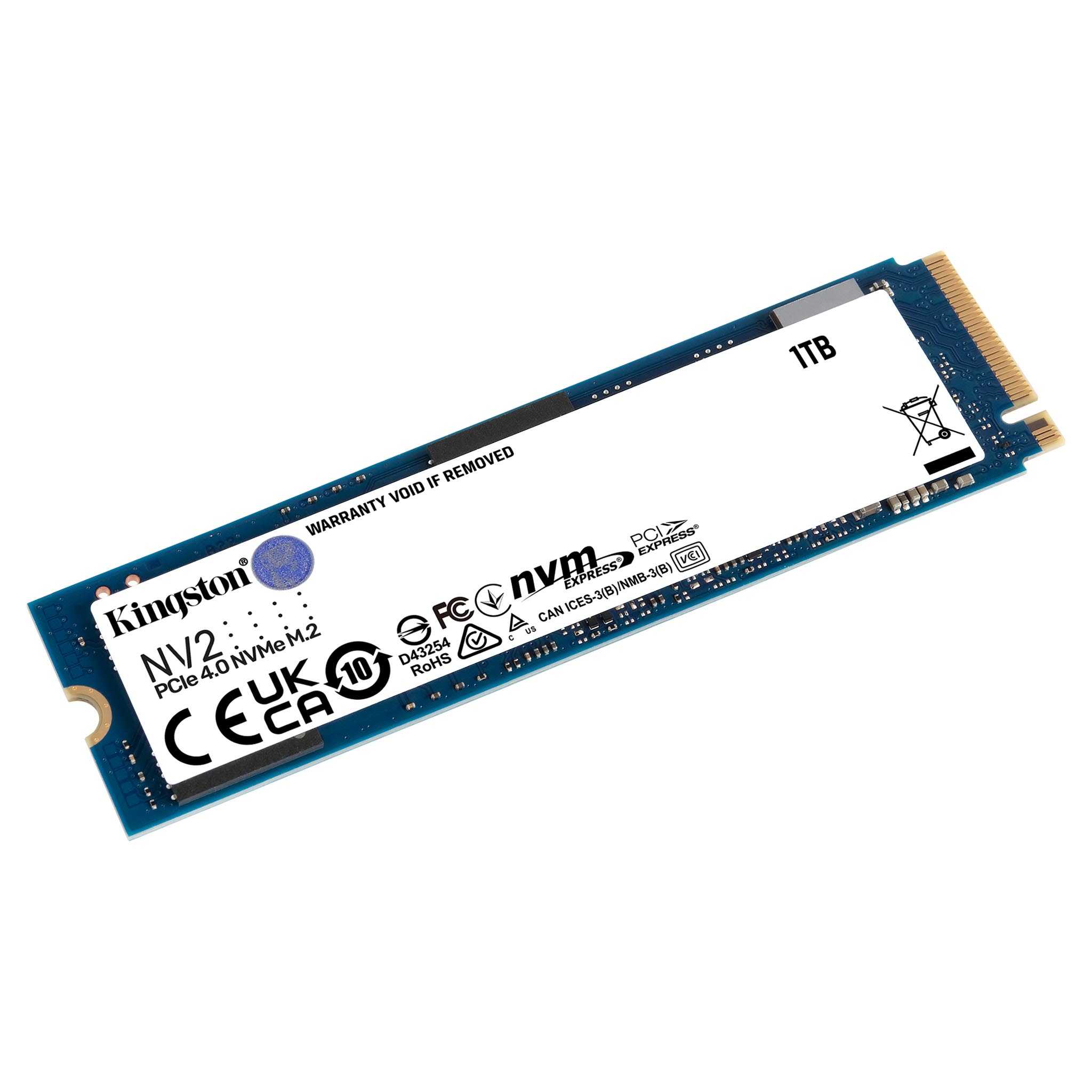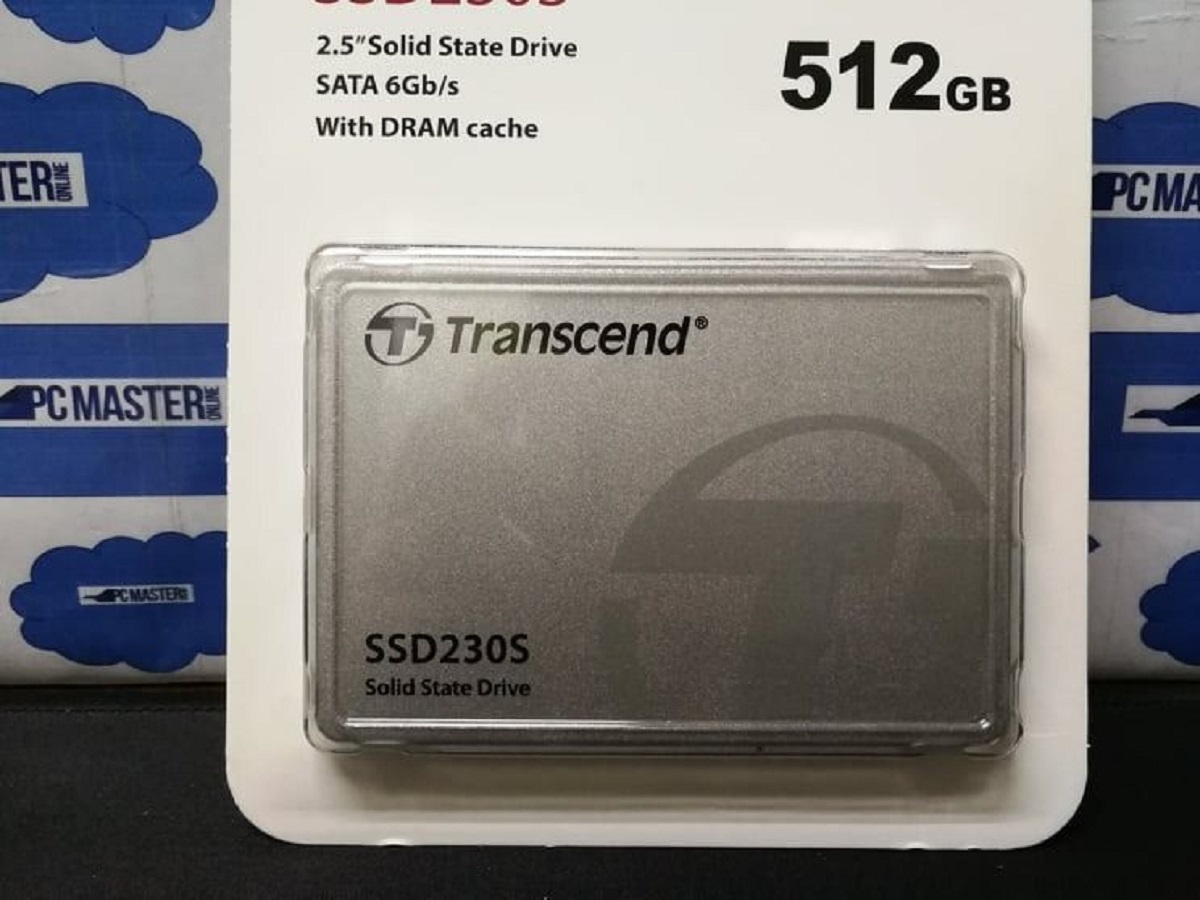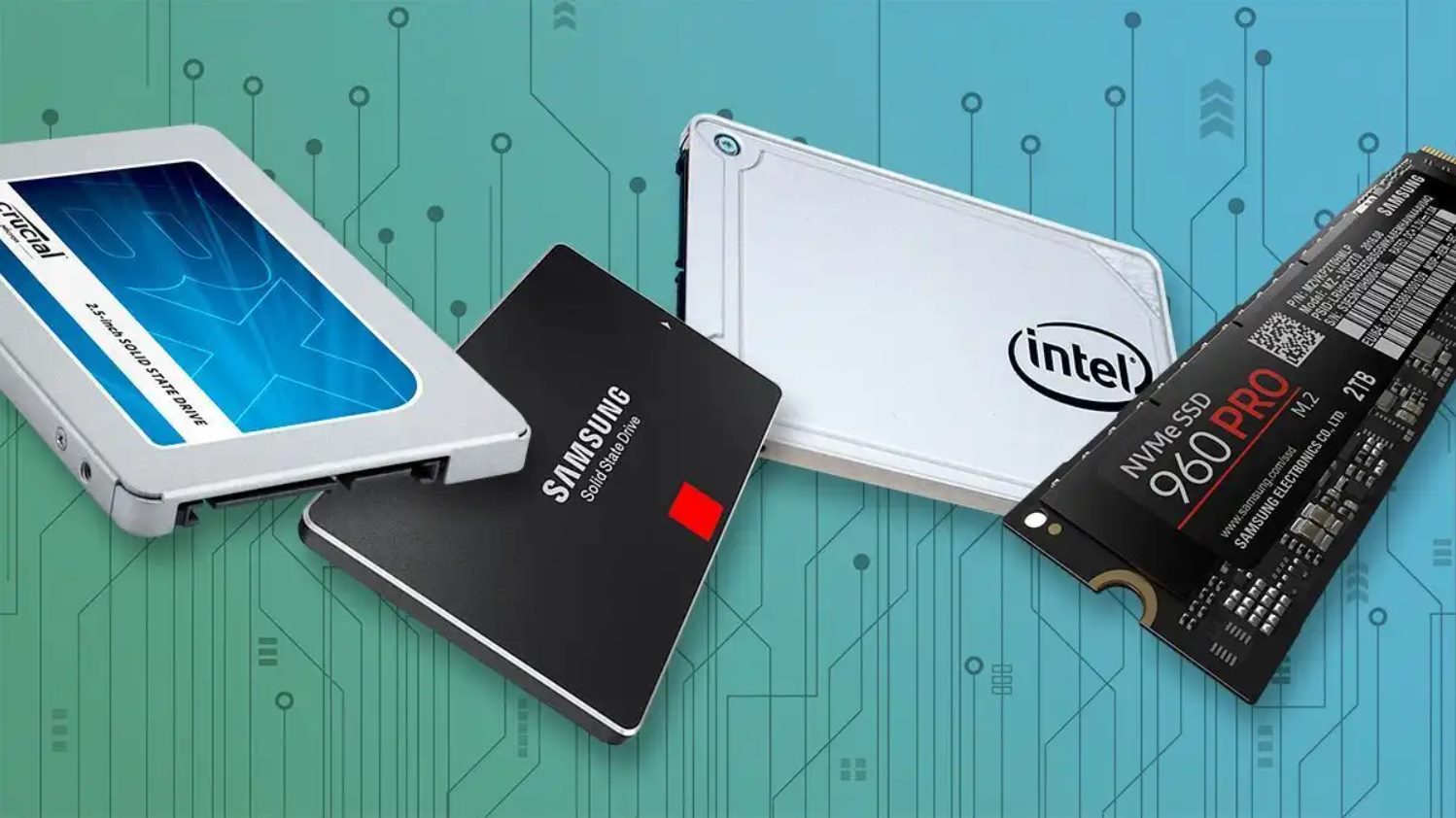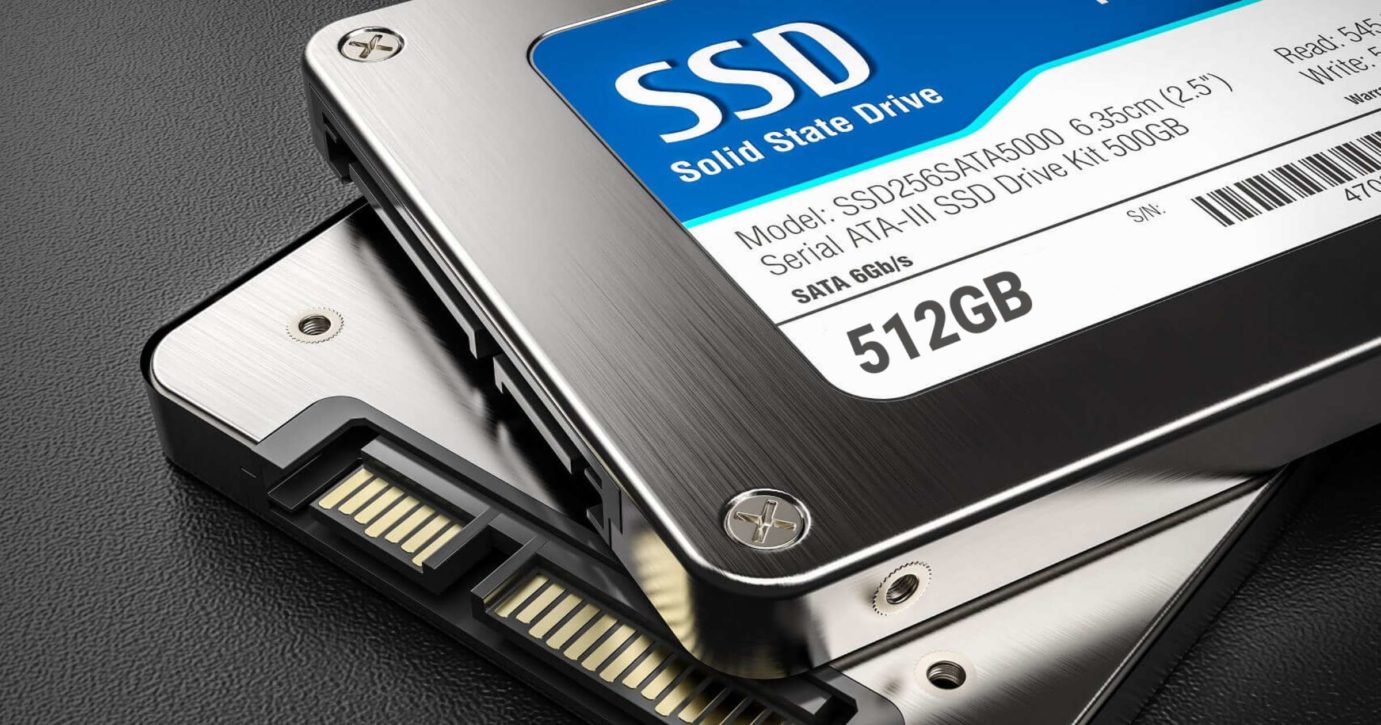Introduction
Welcome to our guide on the world of solid-state drives (SSDs)! If you’re a tech enthusiast or someone in need of upgrading your computer’s storage capabilities, you may have come across the term “512 SSD.” In this article, we will take an in-depth look at what a 512 SSD is, its benefits, and how it compares to other SSD capacities.
As technology continues to advance, traditional hard disk drives (HDDs) are gradually being replaced by faster, more durable, and more efficient SSDs. An SSD is a storage device that uses flash memory to store and retrieve data. Unlike HDDs, which rely on spinning disks and mechanical read/write heads, SSDs have no moving parts, making them more reliable and less prone to mechanical failure.
Now, let’s delve into the specifics of a 512 SSD. A 512 SSD refers to a solid-state drive with a storage capacity of 512 gigabytes (GB). This means it can hold up to 512 billion bytes of data. It provides a significant amount of storage space, making it suitable for various applications, including operating systems, software programs, and multimedia files.
The benefits of using a 512 SSD go beyond just increased storage capacity. Compared to HDDs, SSDs offer lightning-fast read and write speeds, resulting in significantly improved system performance. With an SSD, you can expect faster boot times, quicker application launches, and shortened file transfer times.
In terms of durability, 512 SSDs are built to withstand more physical shocks and vibrations compared to traditional HDDs. This makes them an ideal storage solution for portable devices such as laptops and external drives. Furthermore, SSDs operate silently, generating no noise or vibration during operation, which can be a significant advantage for those who prefer a quiet computing environment.
When compared to other SSD capacities, the 512 SSD falls in the mid-range. It strikes a balance between affordability and ample storage space. Higher-capacity SSDs, such as 1TB and 2TB drives, offer more storage but tend to be more expensive. Conversely, smaller-capacity SSDs, like 128GB or 256GB, may be more budget-friendly, but they may not provide enough room for extensive data storage.
With its 512GB capacity, a 512 SSD is versatile enough to handle various applications. It can comfortably accommodate an operating system, multiple software programs, games, multimedia files, and other data. Whether you’re a casual user or a power user, this capacity is generally sufficient for most computing needs.
Overview of SSD
Before we dive deeper into the details of a 512 SSD, let’s first understand the general concept of solid-state drives (SSDs) and how they differ from traditional hard disk drives (HDDs).
An SSD is a storage device that uses NAND flash memory to store data. Unlike HDDs, which rely on spinning disks and mechanical read/write heads, SSDs have no moving parts. This design allows them to access and retrieve data much faster than HDDs.
SSDs are renowned for their incredible speed and performance. With faster read and write speeds, an SSD can significantly reduce file transfer times and improve overall system responsiveness. This makes it an excellent choice for tasks that require quick data access, such as booting up your operating system, launching applications, or loading large multimedia files.
Another advantage of SSDs over HDDs is their enhanced durability. Since SSDs have no mechanical parts, they are less susceptible to physical shocks, vibrations, and overheating. This makes them more reliable and less likely to fail, ensuring your data remains safe and secure.
SSDs also consume less power than HDDs, which is beneficial for mobile devices like laptops. Lower power consumption means longer battery life, allowing you to use your device for extended periods without worrying about running out of power.
In addition to these performance benefits, SSDs operate in near silence. Unlike HDDs, which can produce noise from spinning disks and moving components, SSDs generate virtually no noise or vibration during operation. This not only contributes to a quieter computing experience but also eliminates any distractions in noise-sensitive environments.
While SSDs offer numerous advantages, it’s important to consider their limitations as well. One primary concern is their relatively higher cost per gigabyte compared to HDDs. SSDs tend to be more expensive, especially when considering higher capacities.
Furthermore, the lifespan of an SSD is determined by the number of write cycles it can endure. This limitation is known as “wear leveling.” However, modern SSDs have significantly improved in this area, and through technologies like TRIM, they can effectively manage and optimize their lifespan.
Overall, SSDs have revolutionized the world of storage, providing faster performance, improved durability, energy efficiency, and quieter operation. Their advantages make them an attractive option for both casual users and professionals seeking optimal computing experiences.
What is 512 SSD?
A 512 SSD, also known as a 512GB solid-state drive, is a storage device that offers a capacity of 512 gigabytes (GB) to store and retrieve data. It is a type of solid-state drive (SSD) that utilizes flash memory technology, providing users with a significant amount of storage space for their files, applications, and operating systems.
This storage capacity is considered to be a mid-range option among SSDs. While higher-capacity SSDs, such as 1TB and 2TB drives, offer more storage space, they can be more expensive. On the other hand, smaller-capacity SSDs, like 128GB or 256GB, may not provide enough room for extensive data storage needs.
With a 512 SSD, users have ample storage space for a variety of applications. This capacity allows for the installation of an operating system, multiple software programs, games, multimedia files, and other data without worrying about running out of storage.
One of the significant benefits of a 512 SSD is its speed and performance. Compared to traditional hard disk drives (HDDs), SSDs offer lightning-fast read and write speeds. This means that accessing and transferring data is much quicker, resulting in improved system responsiveness overall.
Additionally, 512 SSDs are known for their durability. Without any moving parts like those found in HDDs, SSDs are more resistant to physical shocks, vibrations, and wear and tear. This makes them a reliable storage solution, especially for portable devices like laptops, where durability is crucial.
Another advantage of a 512 SSD is its energy efficiency. SSDs consume less power than HDDs, resulting in extended battery life for laptops or other devices. This is particularly beneficial for users who require their devices to remain operational for long periods without a power source.
When it comes to pricing, 512 SSDs offer a good balance between affordability and storage capacity. While they may be more expensive compared to HDDs, the dropping prices of SSDs over the years have made them increasingly accessible to a wider range of users.
In summary, a 512 SSD provides users with a substantial storage capacity, high-speed performance, durability, and energy efficiency. It is an excellent choice for those who require a balance between storage needs and affordability, making it suitable for a wide range of computing applications.
Benefits of 512 SSD
A 512 SSD offers several significant benefits compared to traditional hard disk drives (HDDs) and even other solid-state drive (SSD) capacities. Let’s explore the advantages of using a 512 SSD:
1. Increased Speed and Performance: One of the most notable benefits of a 512 SSD is its blazing-fast speed. With quicker read and write speeds, accessing data and launching applications becomes nearly instantaneous. This results in improved overall system performance and responsiveness.
2. Enhanced Durability: SSDs, including the 512 SSD, are more durable compared to HDDs. As a solid-state storage device without any moving parts, an SSD is less prone to mechanical failure caused by shocks, vibration, or accidental drops. This makes it a reliable choice for portable devices like laptops or external drives.
3. Silent Operation: Unlike HDDs, which produce noise due to spinning platters and moving parts, SSDs operate silently. This eliminates any distracting sounds during use, providing a quieter and more enjoyable computing experience.
4. Energy Efficiency: With lower power consumption than HDDs, a 512 SSD helps prolong battery life in portable devices such as laptops. This is especially beneficial for users who need their devices to operate for extended periods without the need for a power source.
5. Quick Boot Times: Due to their fast read speeds, SSDs allow for significantly reduced boot times. With a 512 SSD, you can start up your computer in seconds, minimizing waiting time and allowing you to dive into your tasks more quickly.
6. Reliable Data Storage: SSDs, including the 512 SSD, have a lower failure rate compared to HDDs. This increased reliability ensures your data remains safe and secure, reducing the risk of data loss due to hardware malfunctions.
7. Improved File Transfer: Whether you’re copying large files or transferring data between devices, a 512 SSD can significantly speed up the process. With its fast read and write speeds, file transfers are completed in a fraction of the time compared to traditional HDDs.
8. Ample Storage Capacity: A 512 SSD provides a generous amount of storage space, allowing you to store your operating system, software programs, multimedia files, and more. This capacity offers the flexibility to accommodate your data needs without worrying about running out of space.
Overall, a 512 SSD offers a winning combination of speed, durability, energy efficiency, reliability, and ample storage capacity. These benefits make it a fantastic choice for users who require a high-performing and reliable storage solution.
Comparison with other SSD capacities
When considering solid-state drives (SSDs), it’s essential to understand how the 512 SSD compares to other SSD capacities in the market. Let’s explore the differences between the 512 SSD and other commonly available capacities:
1. 128GB and 256GB SSDs: 128GB and 256GB SSDs are lower-capacity options compared to the 512 SSD. While these drives can be more budget-friendly, they may not provide enough space for extensive data storage needs. They are suitable for users with basic computing requirements who don’t need to store many large files or multimedia content.
2. 1TB and 2TB SSDs: On the other end of the spectrum, 1TB and 2TB SSDs offer higher storage capacities than the 512 SSD. These drives are ideal for power users or professionals who require extensive storage for large files, multimedia content, and demanding applications. However, they come at a higher price point compared to the 512 SSD.
3. Value for Money: The 512 SSD strikes a balance between affordability and ample storage space. It provides a significant storage capacity without breaking the bank. For many users, this capacity offers an ideal solution, as it accommodates most computing needs while still being budget-friendly.
4. Performance: While capacities vary, the overall performance of SSDs remains relatively consistent. The read and write speeds of SSDs are generally fast across different capacities. Therefore, whether you choose a 512 SSD or a higher-capacity SSD, you can expect similar performance benefits such as improved system responsiveness and reduced file transfer times.
5. Future Proofing: When it comes to future storage needs, it’s important to consider the growth of data storage requirements over time. While a 512 SSD may be sufficient for most users at present, it’s worth considering potential future needs. If you anticipate a significant increase in data storage requirements, opting for a higher-capacity SSD may be a wise choice to future-proof your storage solution.
In summary, the choice between different SSD capacities ultimately depends on individual needs and budget considerations. While smaller capacities like 128GB and 256GB are more cost-effective, they may not provide sufficient space for extensive storage needs. Higher-capacity options like 1TB and 2TB offer ample storage but come at a higher price. The 512 SSD strikes a balance between affordability and adequate storage capacity, making it a versatile choice for many users.
Common uses for 512 SSD
A 512 SSD is a versatile storage solution that can be utilized across various applications. Let’s explore some of the common uses for a 512 SSD:
1. Operating System: One of the primary uses of a 512 SSD is to install an operating system. Whether it’s Windows, macOS, or Linux, having your operating system installed on a fast and reliable SSD like the 512 SSD can significantly improve system boot times and overall performance.
2. Software and Applications: With its ample storage space, a 512 SSD is perfect for installing software programs and applications. Whether it’s productivity software, creative tools, or gaming applications, the fast read and write speeds of the SSD ensure quick launch times and smooth performance.
3. Multimedia Storage: For individuals who work with multimedia files or enjoy watching and editing videos, a 512 SSD provides ample space to store high-resolution images, videos, and audio files. The fast read speeds of the SSD make media playback and editing seamless and enjoyable.
4. Gaming: Gamers can benefit greatly from a 512 SSD. Games are becoming larger in size, and having a fast storage solution is crucial for quick loading times and smooth gameplay. The capacity of the 512 SSD allows for the installation of several games, ensuring that you have the space you need without compromising performance.
5. Data Backup and Storage: A 512 SSD can serve as a reliable backup solution for important files and documents. By using backup software, you can create regular backups of your data onto the SSD, providing an extra layer of protection against data loss. Additionally, the fast transfer speeds make it convenient for storing and retrieving files.
6. Portable Devices: Due to its durability and energy efficiency, a 512 SSD is an ideal storage solution for portable devices like laptops and external drives. SSDs are less susceptible to mechanical failure, making them more reliable during travel or when subject to physical shocks. They also minimize power consumption, extending the battery life of portable devices.
7. Virtual Machines: Virtual machines (VMs) are increasingly popular for testing software or running multiple operating systems on a single machine. A 512 SSD can provide the necessary storage capacity and speed for running VMs smoothly, allowing for quick virtual machine instantiation and optimal performance.
These are just a few examples of the common uses for a 512 SSD. Its versatility, ample storage capacity, and fast performance make it an ideal choice for various applications, from everyday computing tasks to demanding professional workflows.
How to choose the right 512 SSD
When it comes to selecting the right 512 SSD for your needs, there are a few key factors to consider. Let’s explore some essential considerations when choosing a 512 SSD:
1. Price: SSD prices can vary, so it’s important to consider your budget. Determine how much you are willing to spend on a 512 SSD and look for options that fit within that range. Keep in mind that higher-priced SSDs may offer additional features or enhanced performance.
2. Performance: While the performance of SSDs is generally fast, it’s still essential to compare the read and write speeds of different models. Look for SSDs with high sequential read and write speeds, as they will provide faster data transfer rates and better overall performance.
3. Endurance and Lifespan: SSD lifespan is determined by its endurance rating, which represents the number of write cycles it can endure. Look for SSDs with higher endurance ratings to ensure longevity. Additionally, consider features like wear-leveling and error correction technologies, which help prolong the SSD’s lifespan and enhance reliability.
4. NAND Flash Type: SSDs use different types of NAND flash memory, including SLC (Single-Level Cell), MLC (Multi-Level Cell), TLC (Triple-Level Cell), and QLC (Quad-Level Cell). Each type has different performance, endurance, and cost characteristics. Consider your needs and select the NAND flash type that aligns with your requirements and budget.
5. Warranty and Support: Check the warranty offered by the manufacturer to ensure you have sufficient coverage for your SSD. Additionally, look for reputable brands that provide reliable customer support in case you encounter any issues or require assistance.
6. Compatibility: Ensure that the 512 SSD you choose is compatible with your system or device. Check the interface compatibility, such as SATA (Serial ATA) or NVMe (Non-Volatile Memory Express), and ensure that your system supports the interface type. Additionally, consider factors such as form factor (2.5-inch, M.2, etc.) and available slots or connectors in your device.
7. Reviews and Recommendations: Before making a purchase, read reviews and seek recommendations from trusted sources or other users. Reviews can provide insights into real-world performance, reliability, and compatibility of different 512 SSD models.
By considering these factors, you can make an informed decision and choose the right 512 SSD that meets your storage requirements, performance expectations, and budget constraints. Remember to prioritize your specific needs and choose from reputable brands with a track record of delivering high-quality SSDs.
Conclusion
In this guide, we have explored the world of solid-state drives (SSDs) and specifically focused on the 512 SSD. A 512 SSD offers a balance between storage capacity, performance, and affordability, making it an excellent choice for a wide range of users.
With its ample storage space, a 512 SSD can accommodate operating systems, software applications, multimedia files, and more. Its fast read and write speeds, enhanced durability, and energy efficiency ensure optimal performance and reliable data storage.
When comparing the 512 SSD to other SSD capacities, it stands out as a mid-range option, providing a generous amount of storage space without breaking the bank. Higher-capacity SSDs offer more storage but come at a higher cost, while smaller-capacity SSDs may be more budget-friendly but can be limited in space.
Choosing the right 512 SSD involves considering factors such as price, performance, endurance, compatibility, and warranty. By assessing your specific needs and comparing different models, you can find the perfect match for your storage requirements.
In conclusion, a 512 SSD is a versatile and reliable storage solution that offers ample space, enhanced performance, and durability. Whether you’re a casual user, a professional, or a gamer, a 512 SSD provides a balanced storage system that can handle a wide range of applications. Upgrade your storage to a 512 SSD and experience the benefits of fast, reliable, and efficient data storage.







